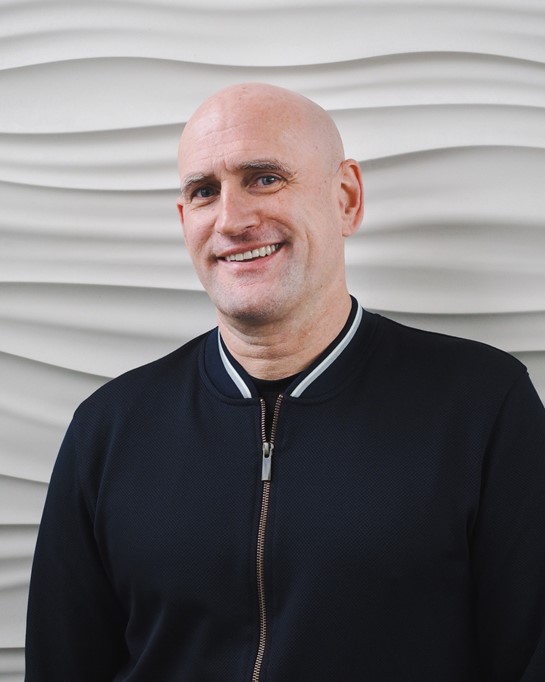

While in recent years healthcare has made significant strides toward optimizing the customer experience, the industry is now at an inflection point with the adoption of generative AI (GenAI). With its highly trained and expensive talent and mountains of unstructured data, healthcare is uniquely suited to leverage GenAI to drive productivity and an improved consumer and employee experience. In fact, according to McKinsey, healthcare companies could unlock up to $1 trillion in value by applying GenAI solutions to unstructured data.
Today’s large language models (LLMs) and GenAI are driving optimized experience at a scale humanly impossible before. The call center is a highly empowered customer service touchpoint with critical engagement and retention implications. Additionally, with the right privacy and security focus, GenAI is an input/output opportunity that solves for yesterday’s consumerism roadblocks of fragmentation, scale, and satisfaction.
According to data from the 2019, 2022, and 2023 McKinsey Consumer Health Insights Surveys, healthcare consumers of all ages are now accustomed to using digital products and services and are eager to see them incorporated into their healthcare. In the call center, GenAI solutions are driving improvement in the customer (and agent) experience across all touchpoints, from Pre-Agent, to On Call, After Call, and Post-Call with Audit and Analytics.
Pre-Agent
At the earliest point of the GenAI-front-office intersection, Pre-Agent provides opportunities. Interactive voice response (IVR) for basic inquiries now moves beyond decision tree limitations, with fluent voice bots for more complex calls. These fluent voice bots can hold a conversation with a member/patient that allows for two-way dialogue and faster navigation to the right answer.
A member going through a machine-friendly tree manually pushing buttons can now, with GenAI, instead immediately make a request phrased in everyday speech. With an “I need to get a copy of my MRI report,” the customer can quickly be routed to the medical records department without listening to a series of unrelated prompts. The call types these systems can handle are quickly getting longer and more complex, with more “turns” that involve the GenAI bot engaging with the caller.
This all results in a more comfortable and faster experience that more successfully emulates human connections, which can drive enhanced CSAT, NPS, and customer engagement and retention with better performance in areas like first call response (FCR), equating to less churn. Additionally, there is a spike in not just customer satisfaction but employee engagement – again contributing to wins on better customer experience and gains for the healthcare organization – including labor efficiencies. The plus on employee engagement is reducing after-call work (ACW) documentation, which everyone dislikes – for more efficient and satisfying task management.
On Call
During a call (the On Call phase), GenAI applications are well suited for minimizing hold time, or “dead airtime,” which refers to the period of inactivity during customer interaction in a contact center. Most of that time occurs because agents must decipher the caller’s intent and then search multiple systems to source the answer. For the consumer – dead airtime is particularly frustrating in a service scenario where empathy goes a long way. Best-in-class GenAI applications have the integrations and latency that allow for the real-time, automated detection of caller intent, and the ability to pull and present to the agent the relevant answer, within seconds – with no agent action. This can even be the case with huge data sets that are changing regularly – situations where it is impossible to expect humans to stay on top of the changes across all caller requirements.
At this touchpoint, it’s clear that more engaged and less frustrated employees deliver enhanced customer experience. If a member/patient is less likely to abandon a call at this phase, customer satisfaction and affinity will follow. GenAI and standard inquiry automation help human agents to concentrate on more complex interactions for more productive customer interactions and enhanced satisfaction to drive better acquisition and retention.
After Call
After Call documentation is an excellent use case for GenAI, whether it is for everyday front-line use cases, or more complex calls like care management or peer-to-peer prior authorization. For simpler calls, the call center’s challenge is often how to quickly get high-quality, consistent notes that supervisors and other agents can use to quickly get up to speed on what happened during the call. For more complex calls, the issue is how to significantly reduce the time spent on documentation by highly trained (and expensive) resources – all while maintaining the high-quality character of existing notes.
In either case, healthcare-specific GenAI solutions can draft even the most complex, high-compliance call notes in just seconds, allowing agents and clinicians to review, possibly make a few edits, and move on to the next call.
Consumers benefit when agents and clinicians can focus on the caller’s issue, and there is better documentation in case first-call resolution was not possible. The business benefits from improved employee engagement (who likes documenting what they just did?) and reduced handle time. As an example, in one recent deployments, 50% of agents were saving three minutes of ACW within the first six weeks of go-live at a leading medical device company, which needs to document calls as part of the FDA’s post-market surveillance process.
Audit and Analysis
Large language models (LLMs) (and increasingly task-specific small language models) allow for semantic understanding and mining at the scale every word of the voice of the customer, often in real-time. No longer is there a need to wait days for a series of CRTL-F searches to return a pile of false positives that need to be waded through to gain real insights. Quality and Analytics Teams can now quickly see what today’s call drivers are, understand those in context, and act with confidence to address emergent concerns. After all, during open enrollment, the last thing you want is to wait a week to find out what was causing new member dissatisfaction.
A more robust audit and analysis framework builds in feedback that can drive real outcomes when addressing process, product, and engagement channel improvement opportunities. At this customer journey touchpoint, GenAI can meet stated and unstated customer needs and experiences and build truly actionable insights.
The intuitive nature of the technology across all these front-office touchpoints emerges to augment agents aiming to meet the higher bar for customer satisfaction. Healthcare has not always been an industry ahead of the curve on tech enablement in areas of customer service. But with GenAI expansion of customer service capabilities, new opportunities open in areas like truly personalized experience and data mining for actionable insights.
About Sohail Djariri, Chief Growth Officer (CGO), Sagility
As CGO for Sagility, Sohail has offered clients a vast knowledge, experience, and leadership focused around nurturing and growing new and existing client bases. He has held many leadership roles including; Growth Officer at Ciklum and Global Vice President of Medical Devices and Services at WiPro. His experience includes 17 years at Cognizant as the Head of Healthcare Sales, where he focused on driving and building new business sales for technology and services. Throughout his career, his focus has been primarily on building teams that drive growth and net new logo acquisitions. Sohail’s 25 years of experience in the healthcare industry focused on Healthcare Technology, leading managed care organizations, working with payers and providers is precisely the expertise needed to drive client growth.
About Kevin Terrell, CEO, BirchAI
Kevin is Cofounder and CEO of BirchAI, a leader in generative AI solutions for healthcare that was acquired by Sagility in early 2024 after the company was spun out from the Ai2 Incubator (part of The Allen Institute for Artificial Intelligence) in Seattle. His healthcare experience spans work at McKinsey & Company, payers, providers, PBMs, pharmaceutical and medical device firms. Kevin is also a Six Sigma Black Belt (General Electric), and cofounder of Start Reading Now, a Minnesota non-profit focused on addressing summer setbacks and the achievement gap.

